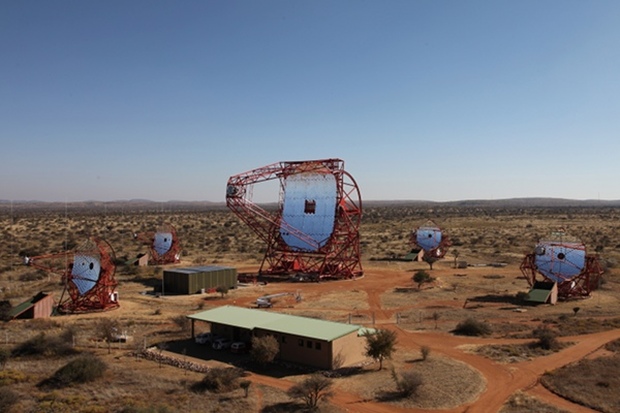Space-time continuum has been baffling the scientists since the days of Einstein and Newton. We continue from the previous post which talked about the observations that MAGIC (Major Atmospheric Gamma-ray Imaging Cherenkov telescope) had noted down.
In 1998, Amelino-Camelia and John Ellis, then at CERN near Geneva, Switzerland, had proposed that high-energy light from distant, active galaxies could be used to check for the effect of quantum foam. The huge distance would allow for even subtle effects to build into a detectable time lag. On the face of it, this was exactly what MAGIC had seen. Things are seldom that simple in physics, and the MAGIC observations have generated lively discussion. “This has become quite a musical,” says Robert Wagner of the Max Planck Institute for Physics in Munich, Germany, part of the team that made the initial observation.
When a similar gamma-ray telescope, HESS – the High Energy Stereoscopic System in the Namibian outback – caught sight of another giant galactic flare in July 2006, it was the perfect opportunity to test the theory. The galaxy in question, PKS 2155-304, is four times as far away from Earth as Markarian 501, so the time delay should have been even bigger. But… nothing. “We saw no hint of a time delay,” says Agnieszka Jacholkowska, one of the team analysing the signals at Pierre and Marie Curie University in Paris, France.

If we assume that space-time, whatever it may be, is probably the same everywhere, this suggests that the original time delay was something intrinsic to the source of the gamma rays in Markarian 501. It is conceivable, for example, that particles were accelerated along magnetic fields near the center of the galaxy, which would naturally result in the emission of lower-energy gamma rays first. But since no one quite knows what processes take place in these dark galactic hearts, there was still plenty of room for debate.
And so things remained until 2013, when the most energetic gamma rays ever seen in our short history of observations hit Earth. It was a gamma-ray burst (GRB): a short, intense flash of radiation not from the heart of an active galaxy but from the explosive death of a hypergiant star. GRBs are so bright that modern telescopes can see them across the entire universe, meaning that their light has travelled through space-time for several billions of years.
Even so, the one observed by NASA’s Fermi telescope on 27 April 2013 – known prosaically as GRB130427A – was eye-popping. It showered Earth with 10 times as many high-energy gamma rays as a run-of-the-mill burst, and included one gamma-ray photon that carried 35 billion times more energy than a visible photon. Automatic alerts were sent out to observatories across the world and within hours a battery of telescopes was scrutinising the burst’s aftermath. One of the scientists alerted was Amelino-Camelia.
The following month, he and his colleagues circulated a paper claiming to see a time lag of hundreds of seconds between the burst’s lower- and higher-energy gamma rays. “The numbers work out remarkably well. This is the first time there is robust evidence of this feature,” says Amelino-Camelia. Robust, because unlike the Markarian 501 observations, it was possible to match the arrival times of photons of various energies with those predicted by a simple equation.
This relationship is pleasing to the mathematical eye and might also help us to see what lies beyond relativity if it is indeed broken: different variants of quantum gravity sketch different pictures of space-time and might have different effects on light.
In string theory, for instance, quantum space-time is a tangle of six extra dimensions of space, in addition to the usual three of space and one of time. Photons of different energies will propagate through this arrangement in quite a different way than is predicted in loop quantum gravity, another popular theory that imagines space-time as a form of chain mail composed of interwoven loops.
For the time being, Amelino-Camelia has banned his team from investigating which, if any, of these competing theories is closest to the mark. “For the moment, I think it’s important to keep separate how we wish nature was in theory and how nature really is from the facts we have,” he says. Instead, the next stage is to see what predictions the time-delay equation makes about time lags in bursts of radiation from other sources.
-end-


































